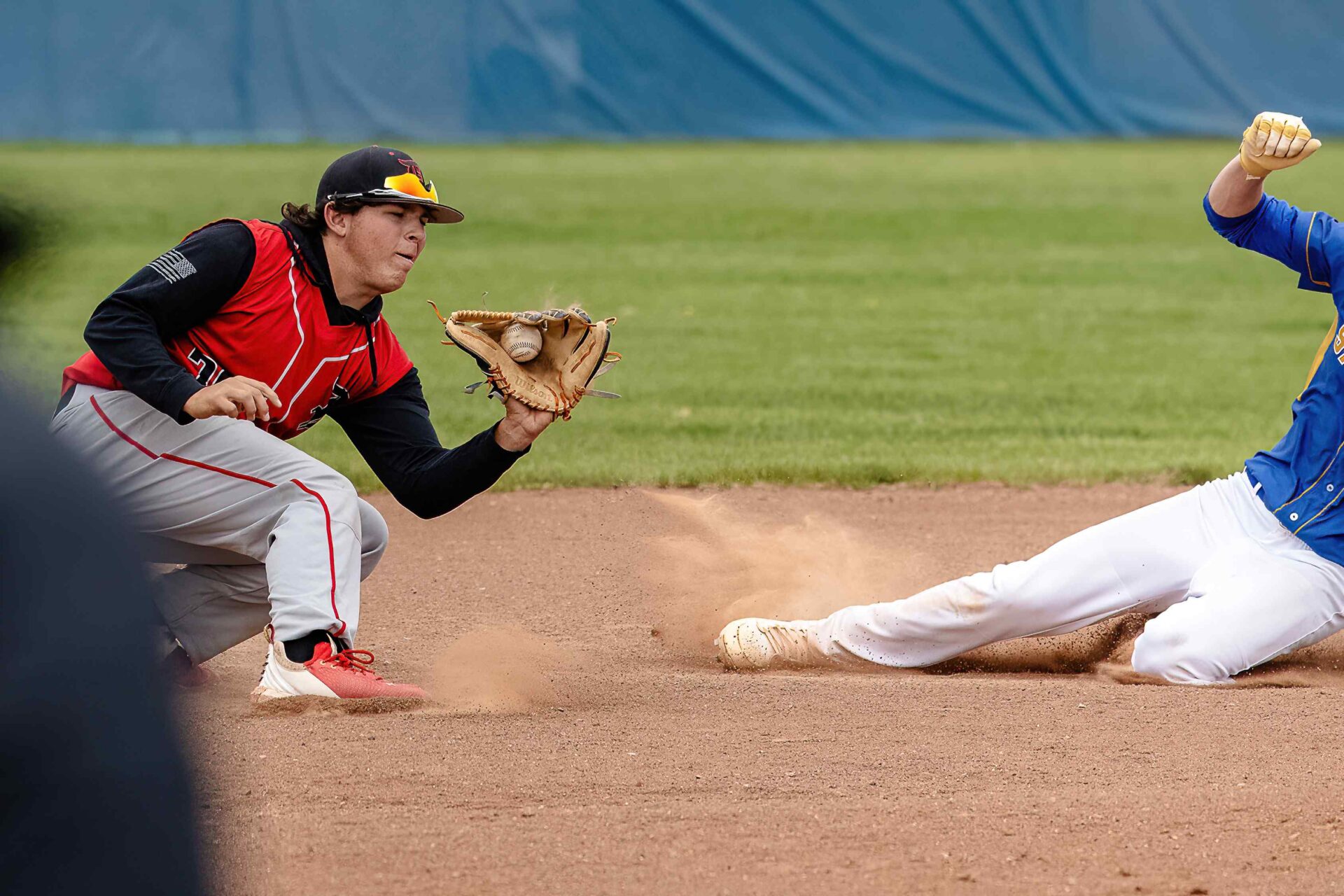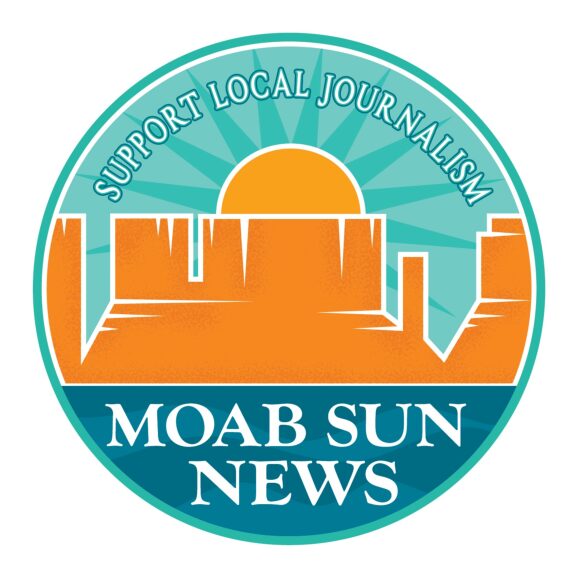What the two Moab Arts Reuse Residency artists created in August

Walk into the Moab Arts and Rental Center’s Foyer Gallery this month and you’ll be greeted with portraits of our local Canyonlands Solid Waste Authority staff—except, these aren’t normal portraits. In the photos, each staff member is portrayed as a detective, holding items like notebooks. The portraits were created by Renée Reizman, who in August participated in the Moab Arts Reuse Residency.
“The sanitation workers I’ve met are really hard-working, and really good at their job,” Reizman said. Tom Hansell, the other artist-in-residence with Moab Arts this August, echoed that sentiment, adding that he deeply enjoyed working with staff at Moab Arts as well.
The month-long residency, which started in 2021, invites artists from all over the world to create art based around, or with items found in, Moab’s waste stream. In August, Moab Arts hosted Reizman, with her portrait project, and Hansell, who created a film and hosted film workshops for members of the community.
Renée Reizman
Reizman’s goal with her project was to encourage people to think about alternate systems of law enforcement—what would it look like if sanitation workers were trained as detectives, and could help solve crimes? But she also wanted to highlight the work that local sanitation workers are already doing. By depicting the workers as heroes in her images, she hopes people will think about the valuable services sanitation workers provide.
The images are also meant to be lighthearted—in one, a sanitation worker is depicted putting handcuffs on a teddy bear. She photographed workers at four locations: the Community Recycling Center, Transfer Station, Moab Landfill, and Klondike Landfill.
Though her project goals shifted during the residency—she was initially thinking about doing a podcast about fires at the landfills—she said the residency was enlightening.

“Even in just the first few days, I learned so much about recycling and the waste stream,” Reizman said. “I don’t think I could’ve learned about it in the same way from just reading about it.”
One of the most surprising aspects of working so closely with the waste stream was seeing just how much trash is produced in Moab, and seeing the sometimes bizarre items that people throw out, she said.
“Sanitation workers know everything,” she said. “They know every home, and every type of trash that gets disposed: they know everyone’s secrets, like, this is the house with all the alcohol bottles, or this is the house with all the dogs, or this is the house with the person who’s great at recycling.”
Local sanitation workers have been involved in some crime investigations, Reizman said: she recalled stories she heard of workers searching for a bloody mattress and of finding a gun in the waste stream. But overall, Reizman said, she came away from the project thinking about ways the waste stream infrastructure is sometimes taken advantage of—why do people throw away valuable items, or items that would be reused? She heard stories of brand new items of clothing, furniture, even tools, that ended up in the landfill.
“These photos aren’t going to change the world,” Reizman said, “but at least conversations can happen. I think it’s an interesting way of asking, how do we move past our current systems and think of them in a new way?”

Tom Hansell
Throughout August, Hansell, a filmmaker, hosted three community workshops on his craft. Participants learned about documentary filmmaking, how to choose projects, how to utilize symbols, and how to edit films. Participants and Hansell ended up creating four films, all under ten minutes long, about soil, composting, the waste stream from consumer to landfill, and the UMTRA (Uranium Mill Tailings Remedial Action) site.
To showcase the films, Hansell built a projection screen using recycled flat screen TVs. They were shown during an event on August 30; Hansell said he’s working on a way to make them available to the public through Moab Arts (keep an eye out!).
“I was pretty happy with how things ended up,” he said. “It gave me a chance to learn more about Moab—that was one of the main things I enjoyed. And I learned about the different community groups involved [in the waste stream]: the Canyonlands Solid Waste Authority was super helpful and allowed me to see behind the scenes during trash collection and at the landfill and recycling center.”
Hansell also visited the city’s sustainability office and local community gardens to create the soil and composting films. Much of the films use videos created by workshop participants, but Hansell supplemented some with his own filming.
Creating a film about the UMTRA project was “fascinating,” Hansell said—he learned a lot about the complicated history of uranium in Moab, and how it still influences life today. That film also uses archival videos made by the U.S. government to promote uranium mining in the 1950s.
“People really went out of their way to make sure that I was able to make a successful project, and they seemed really interested in what Renée Reizman and I were doing,” Hansell said. “It was a really positive experience, and speaks well of Moab and this really unusual partnership between Moab Arts and the Solid Waste Authority.”



